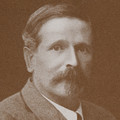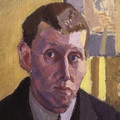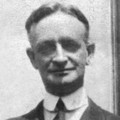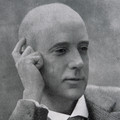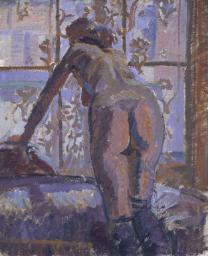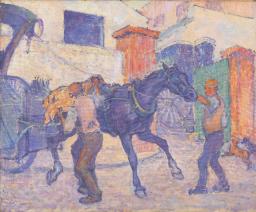Walter Bayes, ‘The Camden Town Group’
The Saturday Review, 25 January 1930, pp.100–1.
THE CAMDEN TOWN GROUP
By Walter Bayes
MR. FRANK RUTTER, who writes the preface to the little show, now on view at the Leicester Galleries, has the merit, not always belonging to critics, that he realizes the potential historic interest of his contemporaries. He justly claims to have had a finger in this particular pie, through his organization of the Allied Artists Association, which brought many of the men together. His reminiscences tempt me to a like lapse into gossip. “Every man his own Vasari” – the pursuit of Art has after all a lighter side. I have but to close my eyes to see 19 Fitzroy Street on a Saturday afternoon with its rack for keeping pictures and its store of tea and cake for the entertainment of possible patrons. But to many of the present generation this little “Cenacle” is almost as legendary as that commemorated by Murger, which indeed it resembled as closely as any non-imitative and purely British Institution well could. Alike for historic and atmospheric effect, let the printers of the Saturday drop honorifics for once.
It was Sickert who invented the name Camden Town Group, averring that that district had been so watered with his tears that something important must sooner or later spring from its soil, and it was to Sickert that I owed my own introduction to a lot of men who were amazingly friendly to what I can see must have been a rather annoying recruit. Pisarro [sic], even more than Sickert, was regarded as the fountain of true principle. Pisarro, Gilman would say with pursed-up lips, Pisarro was profound, and it was part of the tiresomeness of the new member that he would enquire exactly wherein lay the profundity of this certainly charming painter. Manson was, I think, positively a pupil of Pisarro’s as Drummond was of Sickert. Gore and Gilman, for all their admiration of Sickert as an artist, seemed to consider Pisarro as the depository of theoretic wisdom – in part perhaps because he was less picturesquely provocative (what could you think of a man who said he admired Poynter), in part from the typically British respect for one who was in the main line of tradition from the French Impressionists. Different in personality, Gore and Gilman developed styles technically very similar, and about the time when he was living with Gilman, Ratcliffe painted a number of pictures (there are two in this show) which only close study distinguishes from his.
It was a technique almost certain to be developed sooner or later by artists interested in colour analysis and always working from Nature, and to whom the returning again and again to the same study was in some sort an evidence of seriousness, as the working from cumulative knowledge was not. When I put in a claim for this latter as an alternative policy, Gore objected in a charming phrase that it would imply an “infidelity to the present.” For perennial repainting from Nature their execution had the great advantage that you could always poise another lump of stiff paint on a surface already so rough and corrugated that it would not show as a scar. Mr. Sickert for a period yielded himself to this influence and passed it on. When I first asked him on what principles he taught painting, he declared that he directed all his pupils to a reverent imitation of the works of Spencer Gore. Gilman also had a number of pupils and taught his methods with such doctrinaire insistence that many of his students absorbed them for a time at least. So that this manner of painting is most generally known as Camden Town Group painting. Visitors to Fitzroy Street used to regard it as rather shockingly over-coloured. No one would think so to-day, visiting the show at the Leicester Galleries, which is indeed a demonstration of the wisdom of allowing something for the drawing together of oil paint by the action of time. Ginner adapted this manner of painting to a certain deliberate formalism admirably fitting his temperament, but when he came first to Fitzroy Street, all that was in the future, and the only thing he had in common with Gilman and Gore was the brightness of his pigment. He had come over to London from the Paris Atelier of Anglada and at the time I thought he had acquired nothing but that artist’s worst qualities. It was certainly in Camden Town that he found his talent – and friends in an otherwise chilly London.
Gore had a singularly open mind and was ready to see merit in the most varied work. Gilman had a very narrow outlook and a masculine determination to get through. He really believed that nobody really counted as a painter who was outside his own group, and was always looking out for some means of giving it the publicity which, nevertheless, he assured you he despised. “It was I who discovered the Baldheaded Futurist Gilman,” wrote some paragraphist of Zoological bias who had evidently crested futurists and blue-chested varieties up his sleeve for later issues – and Gilman was delighted, as he was also when Marinetti swooped down on us one afternoon and burst into a flood of eloquence to the accompaniment of a thudding taxi outside, which was [end of p.100] ticking off shillings at a, to us, most impressive rate. Gilman was somehow on the outskirts of the debate and I introduced him to the orator “pas pour interrompre à la querelle mais pour l’envenimer” and Gilman appreciated that, for he always regarded himself, for all his essential bonhomie, as a sort of dark Diogenes. To this day I have never understood how people in such a state of poverty succeeded in dining at a restaurant every Saturday night; but we did, and even at the end of the dinner the wives of such of us as were married would have “pêches Melba,” which in those days represented the high peak of luxury. “I like to see people eating money like that,” Gilman would say, “it gives me a sense of vicarious wealth.” Did I see Gore wince? For a moment only. He was “going it” and he liked it.
Bevan was rather the Mæcenas of the group whose subscription was always paid to date, and he was, I fancy, sometimes a help in time of trouble. His gruff voice and appearance of a fox-hunting squire was rather refreshing at Fitzroy Street, where some (of the visitors rather than the members) tended to be “arty.” When respectable American ladies who were seeing “Yurrup” came to Fitzroy Street, it was Bevan who used to fish out for display to them Gilman’s most realistic and intimate nudes. “Who is that lady in the velvet coat?” asked an admiring visitor. “Oh! it’s the woman who lives with X,” grunted Gilman truthfully enough, though he neglected to add that she was also his fellow member’s legitimate spouse. He would grow gloomy sometimes when no visitors ever bought any pictures. “Get some cake at sixpence a pound,” he would say, “with stones in it – Do ’em good.” Not that I think we ever anticipated much patronage from our visitors. When one afternoon Lady Cunard called and bought a Sickert for forty pounds, we regarded her with the awe which attaches to the plunger.
Wyndham Lewis was the artist our visitors most objected to, and they used to ask indignantly what the drawings (which were in his cubist phase) represented. Ever desirous to be of use I would do little drawings recasting these designs in slightly more realistic form, explaining the while. I believe the complainants went away much more favourably disposed towards cubism, but although he took it quite well I fancy this process of popularization must have been annoying to the artist. It was Gore, of course, who in some sort reconciled Lewis to remaining with us. Gore also, I think, introduced Lightfoot as an exhibiting member. I do not think he ever came to Fitzroy Street – was probably supported by the influence of Clifton of the Carfax Gallery, who admired his work very much. Clifton lent his gallery for exhibitions, but regarded our Saturday afternoons as a form of financial suicide. From him and from Sickert we had plenty of contradictory advice as to how to sell pictures, but we rarely sold any.
Well, it was an interesting slice of history, and I wish I had more records of it. I wish I could even find the scribble I did in the Café Royal of Gilman talking to “the woman who lived with X.”
© Estate of Walter Bayes
How to cite
Walter Bayes, ‘The Camden Town Group’, in The Saturday Review, 25 January 1930, pp.100–1, in Helena Bonett, Ysanne Holt, Jennifer Mundy (eds.), The Camden Town Group in Context, Tate Research Publication, May 2012, https://www

